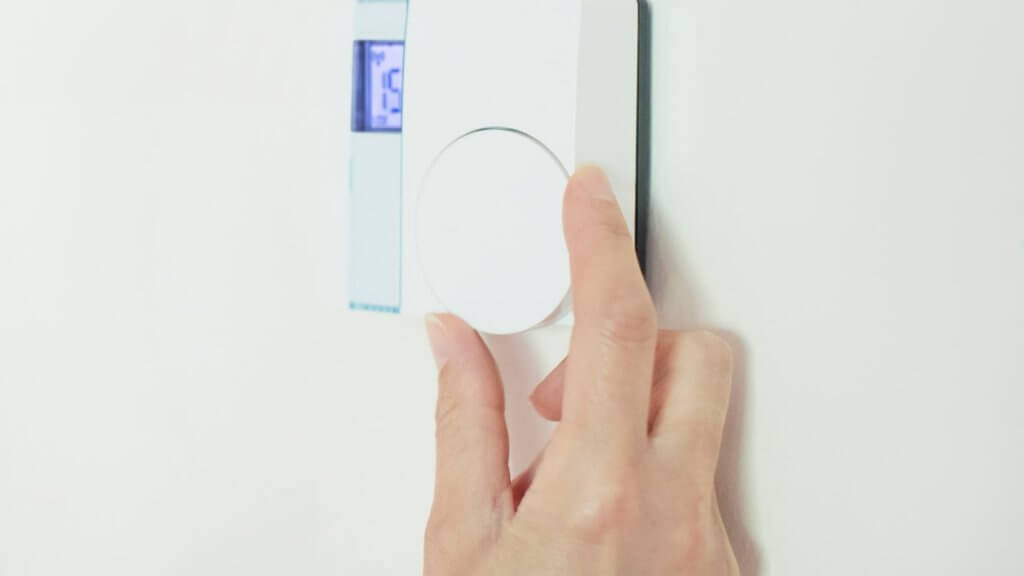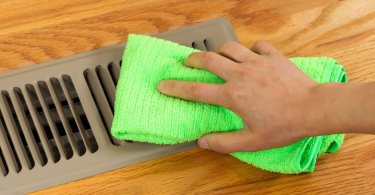Is your heating bill always much higher than your neighbor’s? Chances are you’ve installed your central heating thermostat in the wrong place. But what is the best place for a central heating thermostat?
Picking the correct spot for the heating thermostat enables it to deliver top performance. The device regulates the temperature inside your home, ensuring the atmosphere remains cozy by adjusting the heat level any time there is a need for it.
But not all areas of your home are suitable for placing a heating thermostat. If you put yours in the wrong room, the mistake can end up costing you. To avoid such issues, take help from our easy guide to find the best place in your home for your central heating thermostat.

What Is a Central Heating Thermostat?
Before we move on to talking about where to place a thermostat, let’s first discuss what a thermostat really is.
Most traditional central heating systems installed in homes today use a thermostat to control their heating output.
The central heating thermostat device scans for any changes in the air temperature in your home. If it detects the heating level is too high or too low, it regulates the heating system to act accordingly. Once it achieves the heating target, the device switches off the heating system to maintain the room at your preferred temperature.
The thermostat may be wireless or it might have a wired connection linking it back to the boiler. You need to mount the device on a wall to enable it to effectively monitor any changes in the air temperature. Thermostats are generally easy to control, which is why they prove to be a handy tool for homeowners.
Related article: 5 Best Line Voltage Smart Thermostats
What Are Wireless Thermostats?
Wireless thermostats work on the same principle as wired ones, but they come with a few tweaks. These are digital devices that use signals to communicate with the central heating system of your home.
You can install wireless thermostats more easily as compared to the traditional thermostats, as there is no hassle of wiring them back to the boiler. The wireless devices are battery-operated.
Any time there is a shift in the air temperature, the wireless thermostat senses the change and steps into action. It communicates with the boiler via signals to instruct it to either turn up or turn down the heating. This allows the wireless device to maintain the room temperature within close proximity to the pre-set temperature, at any time.
Benefits of Wireless Thermostats
Wireless thermostats are more accurate at monitoring shifts in temperature, which also makes them more efficient in regulating heat. They are also better than analog thermostats as you can practically install them anywhere, without worrying about connecting electrical wires. Thanks to their digital interface, these thermostats are also more user-friendly and generally easier to control for homeowners.
How to Use a Central Heating Thermostat?
Both digital and traditional analog thermostats come with a number of adjustable controls. While the general controls on all thermostats are the same, we advise you to use your central heating system guidebook for more specific instructions. With the help of these instructions, you can figure out how to set up your preferred target temperature for your home.
You can also use other options that might come with your thermostat, such as the timer function. With the help of this feature, you can program your heating system to automatically turn off and on depending on the time of the day. For instance, you can program your device to turn on the heating, just before you get home from work.
Related article: Honeywell T6 Pro Thermostat Review
How to Select the Correct Room Temperature?
The temperature you select for your home is up to your discretion. Some people don’t tolerate the cold very well. If that’s you, you can set your thermostat at a slightly higher base temperature for a cozier effect.
However, generally speaking, around 65 degrees Fahrenheit is a good place to start if you are unsure about your temperature settings. Once you have set the ideal temperature, your thermostat will constantly monitor for any increase or decrease beyond this level.
When the outside temperature drops down further, remember to turn on your heating earlier during the day to better maintain a constant level indoors. As otherwise, you might feel like increasing the base temperature because your home isn’t warm enough.
The Best Place For a Central Heating Thermostat
If you are looking for effective heating all around your home, place your thermostat in the following areas:
1) At least 5ft From the Ground
As the air heats up, it rises to the top of the room leaving behind the colder air closer to the floor. The thermostat measures the average temperature of a room. That means, installing your thermostat at a good height will register a higher average temperature on the device. Hence, your boiler will heat up unnecessarily because of a lower temperature reading.
If you install your thermostat around 5 feet above the floor it will give you an average temperature reading that is not too high or too low.
2) On Any Interior Wall
You may be thinking of sticking your thermostat to an external wall. However, that isn’t a good idea as you will certainly get a low average reading because of the exposure to cold.
Our goal with the thermostat is to get the best average temperature in your home. That is why you need to position the device in a place that doesn’t experience too many temperature changes during the day.
Therefore, the interior walls are the perfect spot for thermostats as they remain more or less unchanged at all times. You are most likely to get an accurate reading for the average temperature level here as compared to external walls.
3) Near The Center Of The Home
While putting up your thermostat in an interior wall is a wise option, positioning it towards the center of your home is even better. As we already know, the temperature inside interior walls remains fairly stable. However, the interior walls towards the middle of your home will have a slightly higher temperature.
So, installing your thermostat in the center of your accommodation will give you a comfortable and snug average temperature level that is not too hot or too cold.
4) In Commonly Used Rooms
While you might want to install your thermostat in an area that is out of sight, you must also consider the benefit of placing it in frequently used spaces. Putting the device in places like your family room or living room will provide you with a steady temperature all year round. That means, your living room will always be warm and welcoming, without overworking the heating system.
5) In Range of Wi-Fi Router
If you own a wireless smart thermostat, put it up in a place that is within the range of your Wi-Fi router having a strong network connection. Also, be sure to place the thermostat where nothing can block its sensors so it can function without any interruption.
Where Should You Not Position A Central Heating Thermostat?
We’ve gone over the best place to install your thermostat. Now, let’s talk about locations where you should never position your thermostat device if you want it to work efficiently.
- Under direct sunlight.
- Next to doors or windows.
- Near air vents.
- Near a Thermostatic Radiator Valve (TRV).
- In or near the kitchen.
- In the hallway.
The purpose of a central heating system is to maintain a pleasant temperature across all the rooms. But all of the above areas in your home experience frequent fluctuations in temperature during the day. To enable your heating system to work efficiently, place the thermostat in a room that’s closest to the average temperature; not in the above-mentioned locations.
Conclusion: Best Place For a Central Heating Thermostat
Central heating systems are a true blessing in the thick of winter. However, placing your thermostat in the wrong location can quickly turn this into a nightmare. If your thermostat detects a low average temperature, your heating system will go into overdrive, resulting in a huge heating bill. To get over this problem, the best place for a central heating thermostat is:
- 5 feet off the floor.
- On top of an interior wall, preferably near the center of the home.
- In commonly used rooms.
- Within the range of your Wi-Fi, for wireless thermostats.
Positioning your thermostat in these places ensures you don’t have to pay hefty heating bills. And you can enjoy a nice and cozy temperature around your home, all throughout the year.





Leave a Comment